What comes to mind when you think of outreach? Perhaps you may be thinking of making a connection of some sort. You are probably thinking of helping someone in some type of way, or out of a certain situation.
 Delivering, Educational
Delivering, Educational
The word “Outreach” is an activity of providing services to any populations who might not otherwise have access to those services. A key component of outreach is that the groups providing it is not stationary, but mobile; in other words they are meeting those in need of outreach services at the locations where those in need are. In addition to delivering services, outreach has an educational role, raising the awareness of existing services. It includes identification of under served population and referral to services.
 Qualified, Motivated
Qualified, Motivated
Often, “Outreach” is meant to fill in the gap in the services provided by mainstream (often, governmental) services, and is often carried out by non-profit, nongovernmental organizations. This is a major element differentiating outreach from public relations. Compared with staff providing traditional services. There are times that outreach staff may be less qualified, but there other times when outreach staff are more highly motivated.
Church Community Outreach
There are many reasons why the church should get involved in community outreach.
The church is often thought of as a “Haven.” It is extremely important for the church to be involved with the community.
For example, there may be many fatherless children in communities. When men of the church reach out and help these 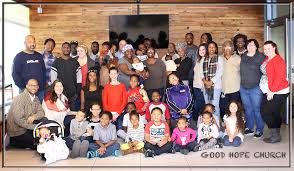 fatherless children, it gives these children model examples to look up to, not only that, it also inspires these children to walk up a positive path and make better decisions in life’s journey.
fatherless children, it gives these children model examples to look up to, not only that, it also inspires these children to walk up a positive path and make better decisions in life’s journey.
Service is contagious. Community service deepens our relationship with God and with our fellow brothers and sisters. It’s an occasion to spread Christ’s teachings and become ambassadors for Christ. Through outreach programs, God’s people have the opportunity to spread the Gospel effectively.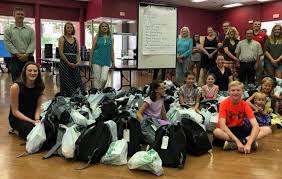
By committing ourselves to serve others, we attempt to demonstrate to God the love we have for Him.
 Community service outreach allows us to rekindle our connection with His word and to spread it to others.
Community service outreach allows us to rekindle our connection with His word and to spread it to others.
We can make our efforts successful, together as a church.
Community Outreach
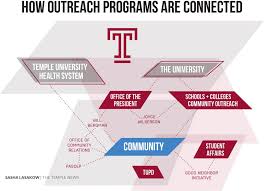
There are three types of community service and service-learning: direct, in-direct and advocacy. Once a community need is identified, the project activities that are developed will align with one or more of the types. Below are definitions and additional examples of each type of community service and service-learning.

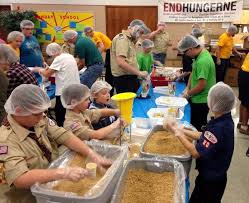 Direct: You can develop direct service activities where people interact with the recipients of service or the physical environment they have targeted for improvement. You and your chapter can volunteer at a food kitchen to serve community members in need. Or perhaps you can work with your community senior center to create an adopt-a-grandparent program.
Direct: You can develop direct service activities where people interact with the recipients of service or the physical environment they have targeted for improvement. You and your chapter can volunteer at a food kitchen to serve community members in need. Or perhaps you can work with your community senior center to create an adopt-a-grandparent program.
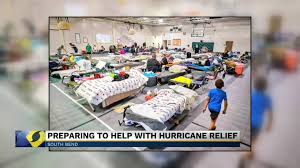 In-direct: If you don’t have the ability to come in direct contact with the beneficiaries of service, you can organize an indirect service activity where people channel resources to a problem but do not interact with those being served. This can include organizing a canned food drive to donate to a food pantry in a neighboring community or participating in a community beautification project.
In-direct: If you don’t have the ability to come in direct contact with the beneficiaries of service, you can organize an indirect service activity where people channel resources to a problem but do not interact with those being served. This can include organizing a canned food drive to donate to a food pantry in a neighboring community or participating in a community beautification project.
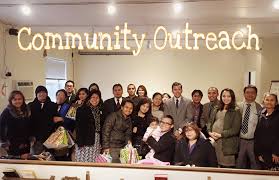 Advocacy: It is important to always be an advocate for the issues that inspire you. During advocacy service, A person bring awareness to an issue and inspire others to take action. Advocacy can also address the underlying causes of a social problem by attempting to influence policymakers or elected officials.
Advocacy: It is important to always be an advocate for the issues that inspire you. During advocacy service, A person bring awareness to an issue and inspire others to take action. Advocacy can also address the underlying causes of a social problem by attempting to influence policymakers or elected officials.
There are many types of community outreach programs. They may include community outreach programs that are based on abuse issues, such as, child abuse, drug abuse, spousal abuse, alcohol abuse, physical abuse, mental abuse, emotional abuse, sexual abuse, Exploitation, Abandonment, neglect and self neglect, just to name a few.
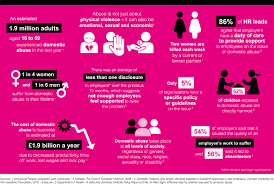
The greatest benefit of community outreach programs is that the programs serve people who are often unable to help themselves. These people, often called at-risk or under served, are easily exploited by unethical people. In other cases, the programs provide education and services to groups of people who simply is not well-educated or misinformed. Young teens may believe they are bullet-proof and cannot become pregnant or contract HIV or AIDS. Outreach programs will provide important education to these people.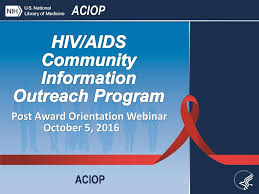
The greatest misconception might be that community outreach programs are designed strictly for poor, uneducated people. Some programs are educational or are working to test a new medical or health invention or way of doing something.

The bottom line is, If we all get involved in our community outreach programs we can help to contain these issues together.
Tips For Conducting Church Outreach Programs
Which community are we organizing?


Before anything else, you must first determine why you want to conduct an outreach program. It should be for the right reasons, you simply want to give back to the community. Next, you must determine which community you think needs your team’s help and attention. The reason may be, you live near the community, or you are an advocate of some sort.
In large communities, you must consider the age range of team. This would help you narrow down the number of the participants, especially during the budget’s planning stage.
Who will our team members be?

Once you have chosen the community you will be assisting, you are ready to organize your team. These people will take charge of leading the committees, ensuring a smooth and efficient flow of the planning and execution of the outreach program. These committees include the following: 1) Overall Head / Planning; 2) Finance; 3) Food; 4) Games; and 5) Logistics (this includes manpower, packaging and distribution).
 The team will also facilitate relaying of information to the respective volunteers of each committee. With this, you must also start sending out calls for volunteers. Doing this early on in the planning stage will help give you an estimate of the headcount you have to consider when you allot your budget.
The team will also facilitate relaying of information to the respective volunteers of each committee. With this, you must also start sending out calls for volunteers. Doing this early on in the planning stage will help give you an estimate of the headcount you have to consider when you allot your budget.
What days and times will we be operating?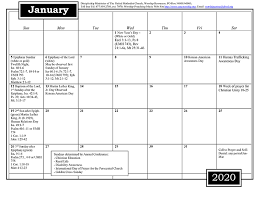
When choosing a date and venue for an event, keep in mind this may change at anytime, depending on the availability of the guests, volunteers, the venue, etc.
Also, It may be wise to consider doing the event on a weekend, since a number of people are free (not at work, not in school) during those times. As for the venue, it would be appropriate to hold the event near, if not at the site of the community. Going the extra mile, especially if your team and your volunteers live far from the site, would definitely make your guest feel special.
 Put your plan on paper
Put your plan on paper
Creating a draft of your program flow will help you determine the materials and equipment you will need. This draft should include the activities that you intend to do—such as the games and surprises—and the meals that you plan to serve. Also, do not forget to give time allowance to account for delays but, consequently, be time-conscious so your guests won’t get hungry.
Start a fund collection
After you’ve drafted the program flow and determined the materials and equipment you’ll need, you may now start collecting funds and in-kind donations. Of course, you may need to start doing this earlier, especially if you’re planning a larger event, which would require a larger budget.
Collecting funds early in the planning stage will help give you an estimate of how much you can spend, thus making it easier to determine the budget—which takes us to our next step…
 What will our budget be?
What will our budget be?
First, you have to finalize the materials, supplies and equipment that you will need. Next, scout for and get a quote from various suppliers, and choose the one that would offer the best quality at a low price. Remember to consider the cost of delivery and the distance of the supplier from the venue, especially for sound equipment and other bulky items. You might find the list of tips below useful for your budget planning:
Put your layout on paper
By planning the layout, you will provide your guests and your volunteers an organized venue. This will prevent crowding in certain areas of the site. You do this by creating a floor plan in which you will label the areas according to how you will be using them during the day of the event. Among the areas that you may consider putting in the layout are the following:
1) Dining area;
2) Activity area; and
3) Rest area—for the volunteers and for storing the food and supplies.
You should also include planning for the physical arrangement of the venue. This includes making your place pretty and lively using balloons, colorful streamers, etc.
 Set a meeting to go over all the details
Set a meeting to go over all the details
Around a day or two before the event, gather your team and have a discussion, before the event meeting where you will run down all the details with them, making sure everything is covered. Review the day’s sequence of events and call times. Don’t forget to discuss contingency plans (i.e., where to order more food, where to buy ice, etc.) so that you are prepared in the case of an unfortunate event. Be sure to re-confirm your dealings with the suppliers, this includes paying the down payments and dues.
Put your plan in action by setting it up
Some suppliers, particularly those lending sound equipment and other “hard-to-assemble” items, may require set-up a day prior to the event. Confirm this with your contacts so that you can give them enough time to set-up before the guests start coming in.
Aside from that, don’t forget to utilize your manpower / volunteers during set-up time. If your logistics committee isn’t enough to put together the tent, you can ask the games committee (or whoever is free) to help out.
Last of all, always remember to keep the site free of unnecessary clutter. Be sure to put trash cans all over the place to remind the guests and volunteers where they are supposed to put their trash. You can also use the volunteers’ rest area as a stock room for your equipment, prizes and gifts so that it is safe from theft.
 Keep a positive attitude
Keep a positive attitude
Bring the right attitude! Be sensitive with your comments and gestures to prevent offending the community. Unpleasant remarks and complaints should be discouraged. Keep in mind that today is dedicated to your special guests (may it be kids, disabled people, the elderly, etc.) and instill in your team the sense of love and giving. And finally, get into the spirit of it—think of it as your thanksgiving for God’s graces.
Additional Tips:
Emphasize teamwork amongst your volunteers.
- It would be nice to partner the volunteers with the guests.
- Distributing food via an assembly line is effective. It will save time and effort, giving the volunteers more time to interact with the guests.
Remember, nothing is too big nor too small for a giving heart.
Tips For Conducting Community Outreach Programs
The following guidelines and strategies for outreach are adapted from Outreach Works. While that program focused on health insurance coverage, many of the elements can be applied to other health promotion and community development efforts.

GUIDELINES FOR EFFECTIVE OUTREACH.
- Meet people where they are
- Be respectful
- Listen to your community
- Build trust and relationships
- Get the word out in a non-stigmatizing manner
- Offer service and information in a variety of locations (including home visits) and at non-traditional times, especially after work hours
- Make written information friendly and easy to understand
- Provide information in the primary language of those who will use the service
- Follow-up, follow-up, follow-up!
PLANNING AND IMPLEMENTING EFFECTIVE OUTREACH.
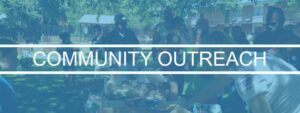 Depending on the nature of your initiative and the type of outreach you think is needed, consider the following steps as you begin or expand your outreach.
Depending on the nature of your initiative and the type of outreach you think is needed, consider the following steps as you begin or expand your outreach.
Determine the purpose and methods of outreach for your initiative (based on discussion above).
Determine staffing needs. If you use trained outreach workers, it helps if they come from the community they work in and are familiar with its characteristics. Outreach workers can play a vital role in developing community trust and a good reputation “on the street.” Workers who live in the community they serve will understand the needs, concerns, and questions of the people they serve, and understand the barriers they face. They are better equipped to develop strategies designed to address the specific needs of your population, especially in minority communities.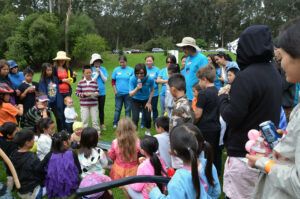
Whether your staff is paid or volunteer, they must be well-trained and knowledgeable. Provide training through modeling by other workers experienced in outreach, time on the job, a formal training program, supervised case review for education purposes, identifying resources for keeping current and distance learning, Internet access, or other innovative methods for workers in rural or isolated areas.
Choose physical space carefully (if you need it). The location and feel of an outreach office sets a tone. Look for a space that:
- Is on a major transportation line
- Is accessible to the disabled
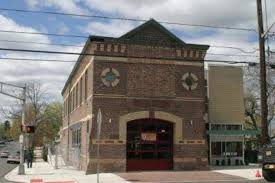
- Has a private area for meeting with clients
- Provides a cheerful environment
- Accommodates children
Plan your services or activities. Develop strategies and action plans using principles for effective program design.

If a local, national or international organization can provide resources or programming (such as for breast cancer awareness week), take advantage of their materials and marketing. An outreach plan, organizational preparation should include:
- Developing systems and making information available in paper manuals or other formats
- Establishing protocols
- Integrating services with other organization or agencies to increase effectiveness.
 Consider potential partners. Partnering, of course, can influence your services or activities, so this step might come earlier in the sequence for your effort. Again, depending on your purpose, find people and organizations to work with as your allies. Identify their motivations (how they will “profit”) and work to develop win-win partnerships. Depending on your initiative and target population, you can look for partners in:
Consider potential partners. Partnering, of course, can influence your services or activities, so this step might come earlier in the sequence for your effort. Again, depending on your purpose, find people and organizations to work with as your allies. Identify their motivations (how they will “profit”) and work to develop win-win partnerships. Depending on your initiative and target population, you can look for partners in:
- Community leaders
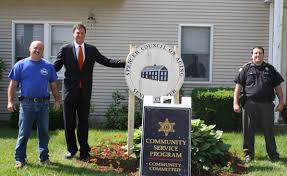
- Churches, synagogues, mosques, temples and other places of worship
- Hospitals (including emergency rooms)
- Health centers (including office staff such as medical secretaries)
- Doctors’ office (including office staff and billing managers)
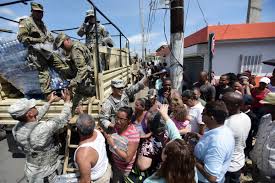
- Pharmacies
- Billing agencies that serve medical providers
- Health-related clinics (such as immunization, blood pressure, smoking cessation)
- Visiting Nurse Associations
- Schools (nurses, counselors, health coordinators). This might require the initial
 support of the superintendent, principal, or PTA
support of the superintendent, principal, or PTA - Childcare centers and home daycare (including “unofficial care providers”)
- Housing authorities
- Courts, police and public safety departments
- Local businesses and employers
- Local agencies or local offices of state or national associations that provide services to your population

- Programs for those in need (shelters, job training, literacy programs)
- Local media (print, radio, TV, billboard)
- “Satisfied customers” of your services. Word of mouth is the best source of referrals
 Expand your outreach gradually. There are many possible avenues for outreach, so new outreach programs are wise to develop a prioritized strategy for raising awareness. The authors of Outreach Work suggest a gradual expansion of outreach by moving through “zones.”
Expand your outreach gradually. There are many possible avenues for outreach, so new outreach programs are wise to develop a prioritized strategy for raising awareness. The authors of Outreach Work suggest a gradual expansion of outreach by moving through “zones.”
Start with activities that are easier and most comfortable and move toward less familiar and more challenging ones. Here are some sample activities for gaining and building on success in outreach:
Examples for Zone one: Most comfortable/easiest
- Conduct outreach activity for a community group well-known to you.
- Provide in-service or referral information for other programs in your organization.
Examples for Zone Two: Moderately familiar/more challenging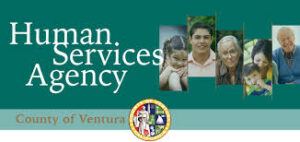
- Offer a training or information session to a local school, medical provider, neighborhood group, or human service agency.
- Participate in joint outreach activities with another organization.
Examples for Zone Three: Least familiar/most challenging
- Establish relations with informal community leaders not known to you, and ask them to sponsor an outreach activity at which you will speak.
- Conduct a presentation for a human service agency that already has outreach workers, but is unfamiliar with your program, to determine how you can help them.
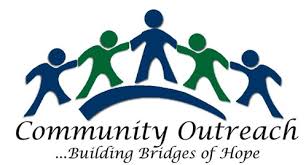 Make the most of your outreach. Even if you have great sums of money for outreach (which most of us don’t), it is possible for outreach to fail if you don’t understand the issues of access and barriers to access for your population.
Make the most of your outreach. Even if you have great sums of money for outreach (which most of us don’t), it is possible for outreach to fail if you don’t understand the issues of access and barriers to access for your population.
Inefficient outreach doesn’t reach the desired individuals or group. It may be presenting its message in the wrong language, or in a form that does not communicate well with its intended audience.
And remember that people need to hear about something three to seven times before they act, so outreach needs to be varied and constant. In addition to “Follow-up, follow-up, follow-up,” the keywords for an effective outreach program are, “Repeat, repeat, repeat!”

Keep In Mind
Outreach can be the foundation of an effort to improve the health and well-being of a population, or one component of it. In whatever measure you employ outreach, it will be most effective if you know your users and community, and are creative, trustworthy and very determined.
No single outreach practice works for all initiatives. Likewise, in one initiative, what works in one community might not work in another. A broad repertoire of options increases the chances of success in an outreach effort.
Practitioners of outreach identify certain factors that seem to impact success:
timing; credibility and sensitivity of outreach staff; organization and publicity of the outreach effort; and the local culture and attitudes. People need to hear about your program and efforts from several sources before they will use your service or contact you.
While your initiative might not have the magical allure of the cornfield ballpark in “Field of Dreams,” you can definitely build it outwards to reach those you want to serve. The better you know your potential users, the more effective your outreach will be.
Don’t forget to put all of your Outreach Program details on paper.
I really hope you have enjoyed this page, if you have any questions or want to leave your own personal post, please leave your comments below in the comments box.
I hope that you have really enjoyed this post,
Please Leave All Comments in the Comment Box Below ↓



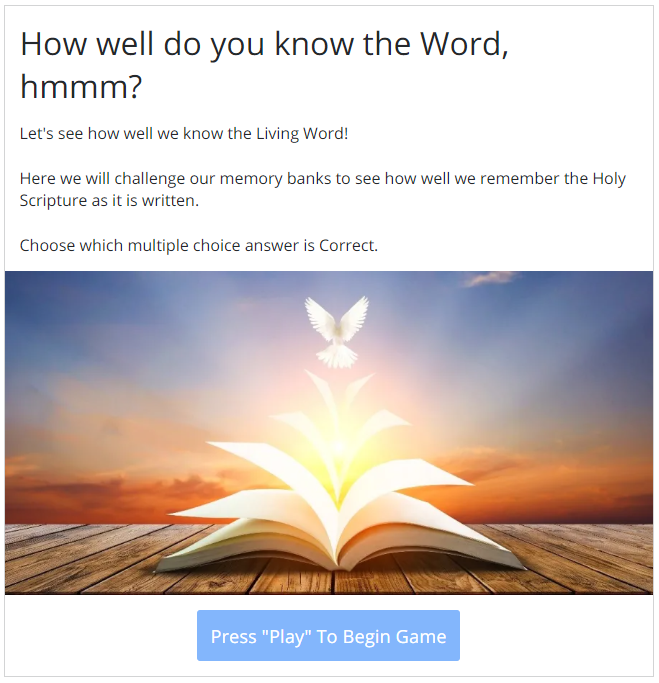









There is alot of content to go through. Maybe you could use links for the page breaks. Overall a wonderful and uplifting website. It is filled with many good Ideas for developing a church community outreach programs. Possibly link some info to the pictures below, or have many pictures between sections. I am grateful there are people like you who care. Always,Kristq
Thank you Krista for taking the time to review my website.
You might also want to look at the Product Reviews.
All the best to you,
Jerry
You are so right in saying that there is nothing too big or too small for the caring heart. This article on outreach and how to achieve it should be achievable by everyone and not just church groups. Even families can get together and do their part.
The hardest part is coming up with the idea or theme, but once that is decided it gives everyone a sense of belonging to a community if you can pull it off.
Some great advice on how to do just this, and I think that both the givers and the recipients can benefit from this sort of activity.
Thank you for utilizing a portion of your time for the reading and commenting on this Bible Study Session.
I Wish You Lots of Blessings on Your Journey!
Hi Jerry,
Thanks for this article, it was a really good read, with a lot of very uplifting points. I agree, community outreach is such a n important aspect for any church because it shows that they care about the community and are doing what they can to help with the resources at their disposal.
A lot of churches do not take this into account as much, but lending a helping hand and being active in the community is a very rewarding experience.
Hello,
Thank you for reading and commenting on Church Community Outreach Programs – Examples Community Outreach Programs.
You are most certainly welcome for the sharing of this really good read, with a lot of very uplifting points, and thank you for calling it that.
Warm Regards To You My Friend!
Hey
Nice article you have here. I love this post.
The church community outreach program, is a way in which the church as a body renders a helping hand to the vulnerable ones. Churches that engage in such act, is definitely doing the Will of Jesus Christ, and the Holy Bible says, whoever gives to the poor lends to the Lord.
Church outreach program is also a medium to win souls to the body of Christ through Noble deeds.
When starting this site I wanted to study the things that I have been learning, continuing to grow on, and share them with the rest of the world.
Thank you for loving this nice article, and calling it such.
Enjoy Your Journey and Stay Blessed My Friend!
Nothing is too big or too tiny for a compassionate heart, as you rightly point out.
Everyone, not just religious groups, should be able to apply the tips in this essay on outreach. Families can band together and contribute.
Many churches don’t consider this as much, but giving back to others and being involved in the community may be quite gratifying.
Hello,
I agree with your comment whole-heartedly.
My pastor once told us, if, at the least, every church made it a priority to become involved in their surrounding community, there would be no need for social services systems in countries that have them.
This would also contribute to giving a helping hand to those less fortunate ones who are suffering from hunger, as well as, homelessness.
Thank you for your comment.
To GOD Goes The Glory,
Jerry